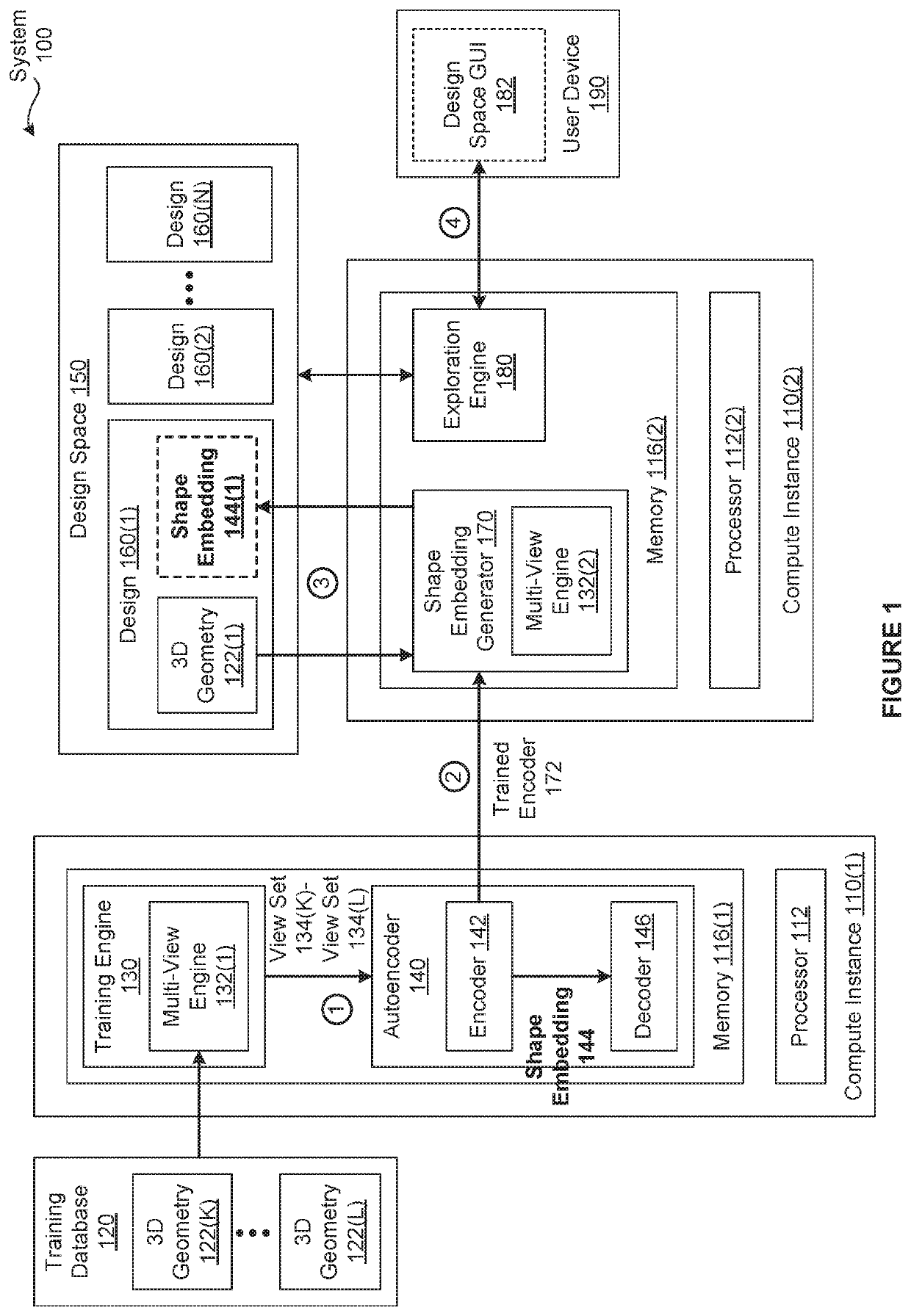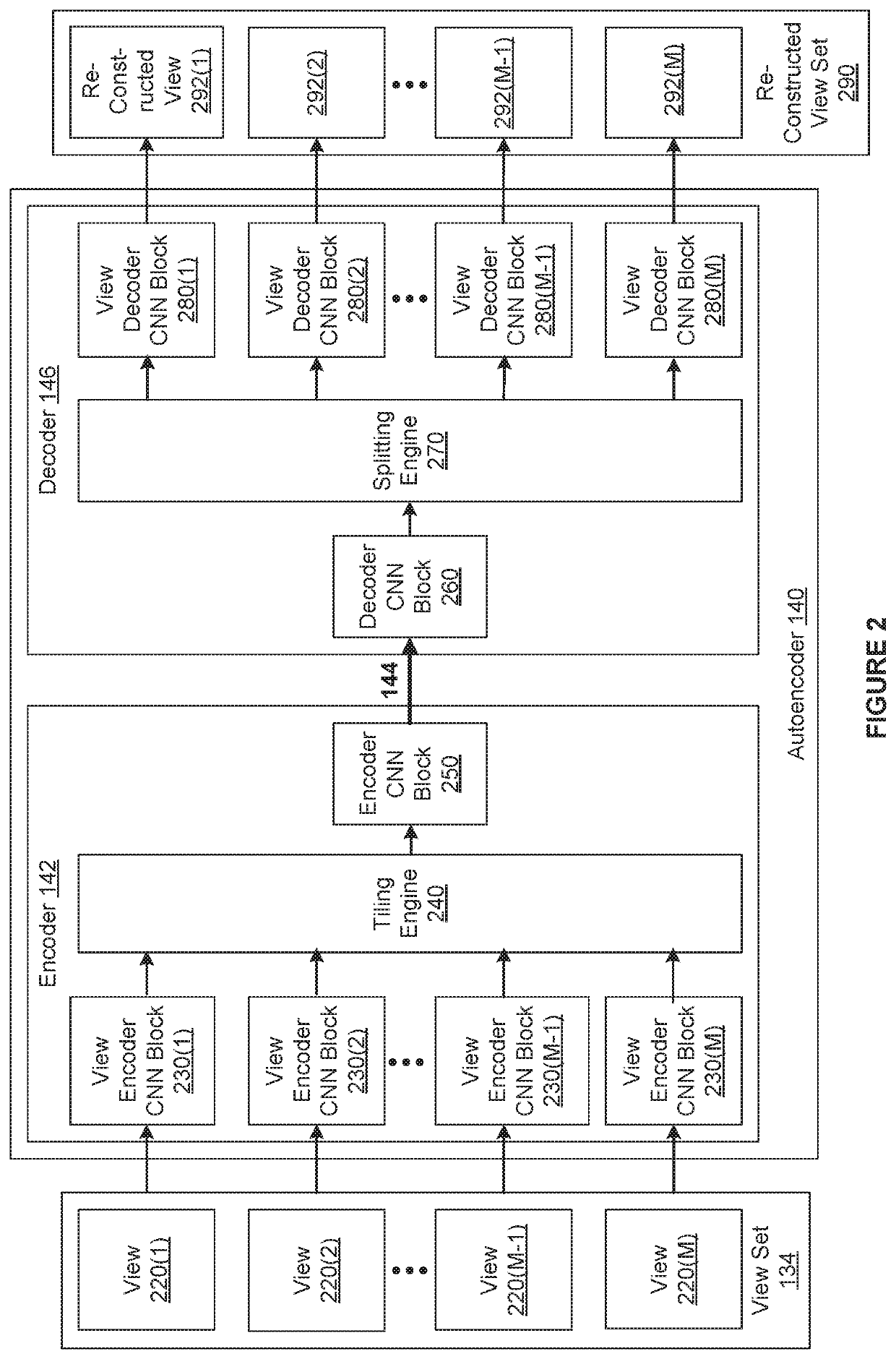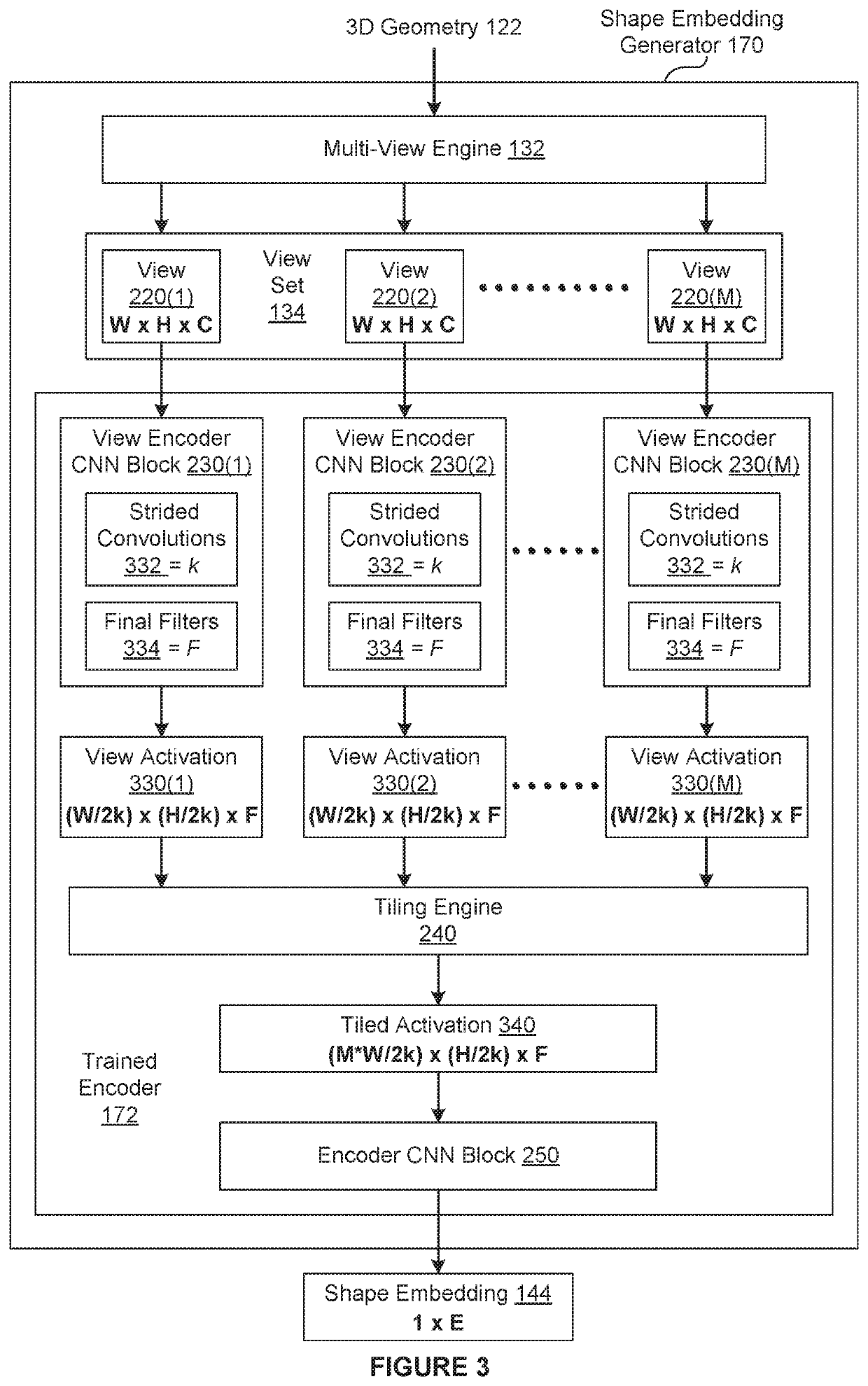Shaped-based techniques for exploring design spaces
- Summary
- Abstract
- Description
- Claims
- Application Information
AI Technical Summary
Benefits of technology
Problems solved by technology
Method used
Image
Examples
Embodiment Construction
[0001]Embodiments of the present invention relate generally to computer-aided design software and, more specifically, to shaped-based techniques for exploring design spaces.
Description of the Related Art
[0002]Generative design is a computer-aided design (CAD) process that automatically synthesizes designs that satisfy any number and type of high-level goals and constraints. In a typical generative design flow, a user specifies the high-level goals and constraints, and a generative design application then executes a variety of multi-objective optimization algorithms to optimize potential solutions based on the high-level goals and constraints. This generative design process is an evolutionary process that typically generates a vast number (e.g., tens of thousands) of complex geometrical designs that satisfy the high-level goals and constraints. The generative design application presents those designs to the user in the context of a design space. Finally, the user explores the “genera...
PUM
 Login to View More
Login to View More Abstract
Description
Claims
Application Information
 Login to View More
Login to View More - R&D
- Intellectual Property
- Life Sciences
- Materials
- Tech Scout
- Unparalleled Data Quality
- Higher Quality Content
- 60% Fewer Hallucinations
Browse by: Latest US Patents, China's latest patents, Technical Efficacy Thesaurus, Application Domain, Technology Topic, Popular Technical Reports.
© 2025 PatSnap. All rights reserved.Legal|Privacy policy|Modern Slavery Act Transparency Statement|Sitemap|About US| Contact US: help@patsnap.com



